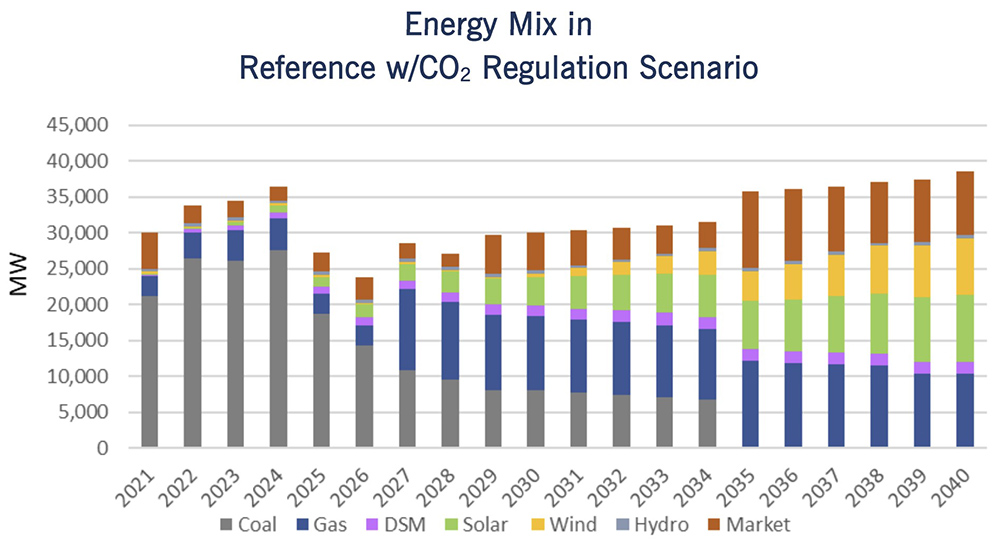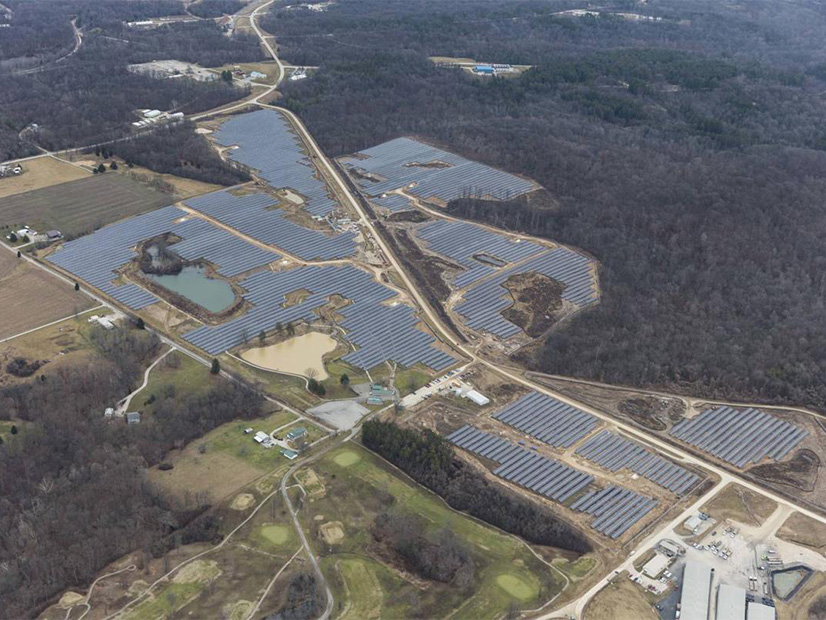A trade association representing emerging energy technologies is criticizing Duke Energy Indiana’s proposal to build a natural gas power plant, saying a greener collection of solar, wind and storage resources can annually save customers several million dollars.
Advanced Energy United (AEU) released a report in February assessing alternatives to Duke Energy Indiana’s (NYSE:DUK) 2021 integrated resource plan that proposes to build a 1,221-MW combined cycle plant by 2027. The clean-energy advocacy group tapped consulting firm Strategen to assess Indiana’s changing market dynamics and develop a clean-energy portfolio to “match or exceed the energy and capacity” from Duke’s proposed gas-fired plant.
Strategen and AEU concluded that a combined 2.9 GW of energy from wind (1,600 MW), solar (1,300 MW) and four-hour battery storage (900 MW) could save ratepayers $68.5 million in 2027. AEU said it anticipates savings in subsequent years will be even higher.
The advocacy group said last year’s Inflation Reduction Act changes the playing field for the resource transition. It said its suggested portfolio can provide equivalent energy and capacity more cheaply than the cost of a large gas plant. The group added that its economic analysis of the two options included potential excess energy sales and market purchases.
Duke said in its IRP that a new gas plant would avoid “committing to dramatic resource changes prematurely, preserve its decision-making flexibility going into the 2024 IRP analysis, and shield customers from undue cost increases in the near-term.”
“Duke’s assumptions from 2021 are outdated,” AEU said. “Market trends and recent federal action to extend energy tax credits have dramatically shifted the economics of various energy resources. This created a need to revise current and future utility plans so that benefits can flow to Hoosiers.”
 Duke Energy Indiana’s contemplated portfolio mix through 2040 under its 2021 IRP | Duke Energy
Duke Energy Indiana’s contemplated portfolio mix through 2040 under its 2021 IRP | Duke Energy
According to the report, the Duke gas plant would generate 6,014 GWh during 2027 while the renewables portfolio will churn out 7,984 GWh and likely require 961 GWh of imports. Economic analysis pinned the clean energy portfolio at $227 million in 2027 and the gas plant at $274 million, accounting for capital expenditures, fuel costs and fixed and variable operations and maintenance costs. Strategen said it also factored in revenues from selling excess energy, which the clean energy portfolio has more potential for.
The firm said its gas plant estimates don’t include the possible carbon capture and sequestration equipment that Duke may need to install to reach its 50% carbon-reduction goal by 2030 and net-zero carbon emissions by 2050. It also didn’t put a number on the cost of converting the plant to green hydrogen.
“This analysis is conservative and understates the potential economic value of the clean energy portfolio because it is only considering the energy revenue when matching profiles with the [combined cycle plant],” Strategen said. “If allowed to operate purely economically, the battery storage would see added revenue by arbitraging energy to periods of high prices, not just when the renewable generation is short.”
AEU noted that volatile gas prices may make the gas plant a riskier bet. It said Duke studied a scenario in its IRP where gas prices are so high — Duke kept the fuel price forecasts confidential — that building a new plant would be uneconomic.
The advocacy group asked that Duke re-evaluate its plan to invest in the plant and to “consider further investment in clean energy resources through the added benefit of the IRA tax credits.”
Duke Disputes Clean Portfolio Savings
In an emailed statement to RTO Insider, Duke said it’s in the process of updating its IRP to reflect the IRA, new guidance from MISO on generation planning, and the changing costs of technology and commodities. The utility noted that it’s holding a third public session on the IRP update Feb. 27.
Duke said AEU’s report relies on generic cost data which “may not always capture the full costs” and doesn’t match the real market bids that it received in request for proposals issued last year. It said when it updated AEU’s proposal for current conditions in Indiana, it immediately found the clean energy portfolio to be more expensive.
The utility said the portfolio is “not a realistic plan” because it requires Duke to site large-scale renewable projects that need thousands of prepared acres within six years.
“Generation diversity is essential and a strength, and we expect our updated plan will be diverse and include a significant amount of renewables as well as natural gas resources that can be dispatched when needed, regardless of weather conditions,” Duke said. “Including a moderate amount of natural gas in the resource mix positions us to retire coal plants earlier and add more renewables on our system until new, economical carbon-free technology arrives.”
The utility added that it’s simply too risky to substitute a “core” on-demand resource with a generation mix that relies on solar, wind, four-hour storage and power markets.
“We have to plan in a way that ensures reliability and self-reliance and is not overly reliant on the weather and power markets,” the company said. “We are making the largest transition from coal-fired power in the state, and the renewable energy we add will be the largest addition of any of Indiana’s utilities. We have to do this right. We have to transition in a way that ensures reliability and affordability for customers as well as cleaner energy.”




